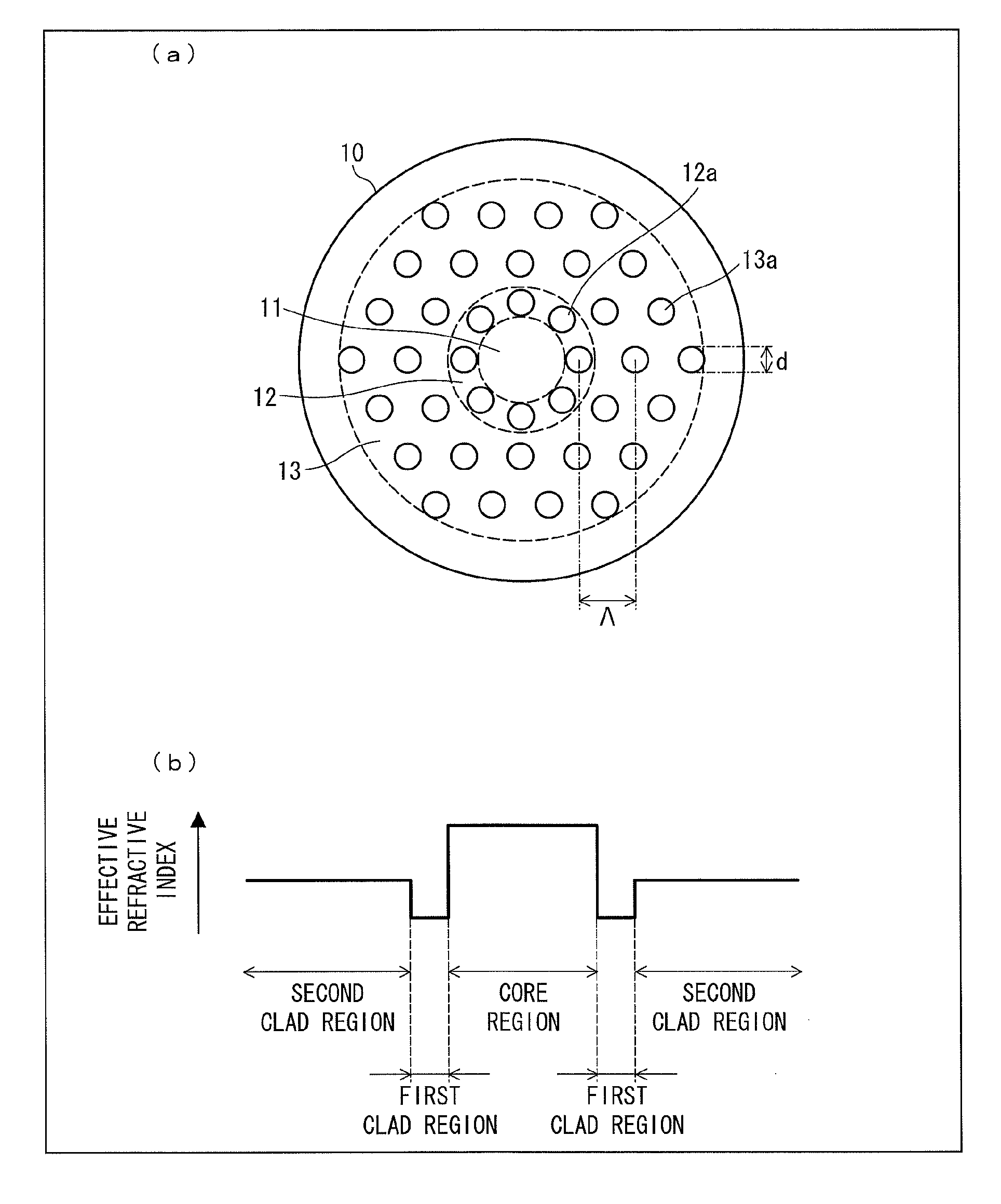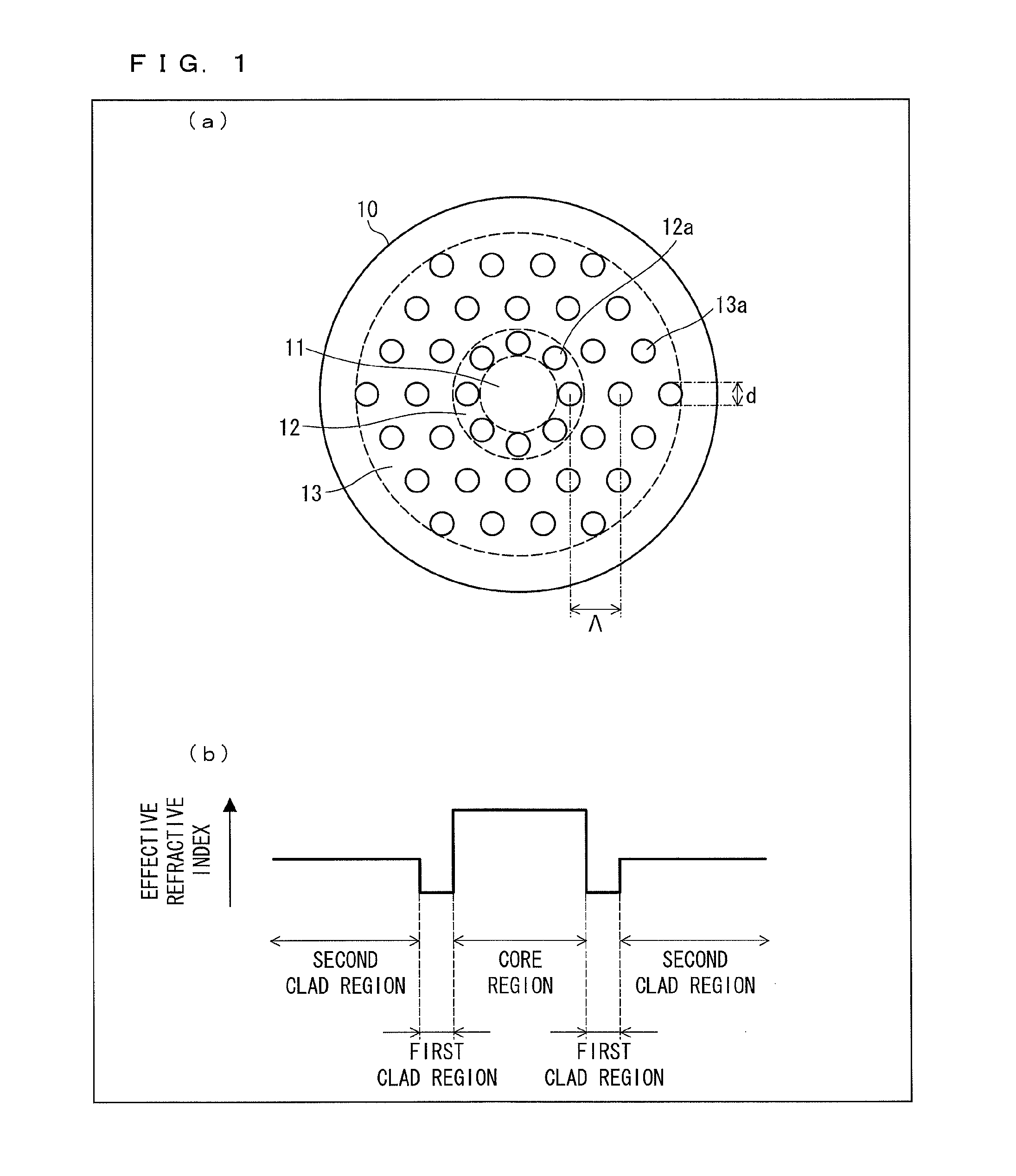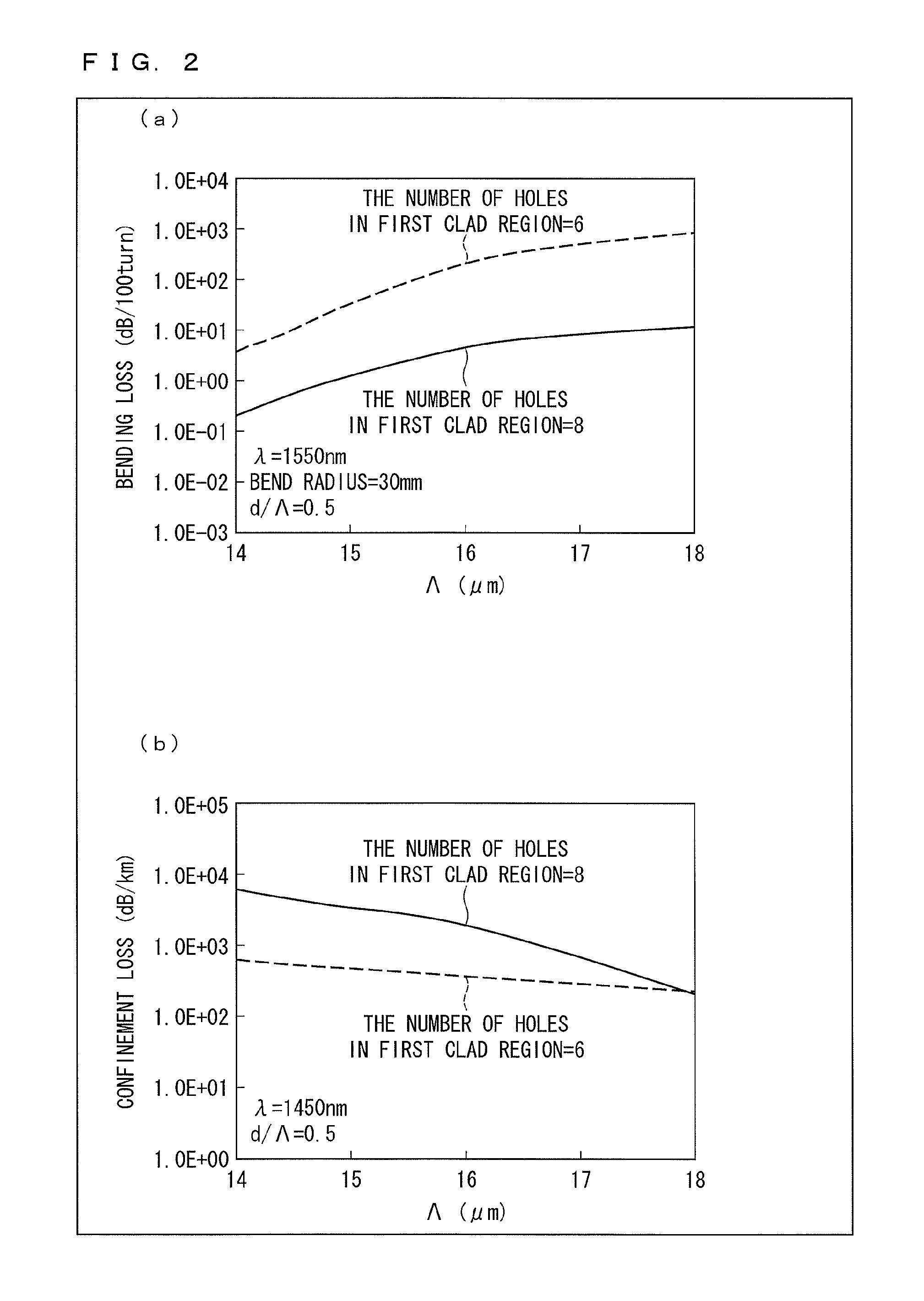Optical fiber having holes
a technology of optical fibers and holes, applied in the field of optical fibers, can solve the problems of limit on the increase of the effective area of single mode fibers, and achieve the effects of small bending loss, easy production, and great effective area
- Summary
- Abstract
- Description
- Claims
- Application Information
AI Technical Summary
Benefits of technology
Problems solved by technology
Method used
Image
Examples
embodiment 1
[0055][Embodiment 1]
[0056]The following description will discuss Embodiment 1 of the present invention with reference to FIGS. 1 through 7.
[0057](Structure of Optical Fiber)
[0058]The following description will discuss a configuration of an optical fiber 10 in accordance with Embodiment 1, with reference to FIG. 1. (a) of FIG. 1 is a cross-sectional view illustrating a configuration of the optical fiber 10 in accordance with Embodiment 1. (b) of FIG. 1 is a graph showing an effective refractive index profile of the optical fiber 10 in accordance with Embodiment 1.
[0059]The optical fiber 10 has a cross sectional configuration in which (i) a core region 11 has a disk shape, (ii) a first clad region 12 has a ring shape that is arranged around the core region 11, and (iii) a second clad region 13 has a ring shape that is arranged around the first clad region 12 (see (a) of FIG. 1). The regions of the optical fiber 10 are made from respective identical materials (for example, pure silica ...
embodiment 2
[0092][Embodiment 2]
[0093]The following description will discuss Embodiment 2 of the present invention, with reference to FIGS. 8 through 10.
[0094](Configuration of Optical Fiber)
[0095]The following description will discuss a configuration of an optical fiber 10′ in accordance with Embodiment 2, with reference to FIG. 8. FIG. 8 is a cross-sectional view illustrating a configuration of the optical fiber 10′ in accordance with Embodiment 2.
[0096]The optical fiber 10′ has a cross sectional configuration in which (i) a core region 11′ has a disk shape, (ii) a first clad region 12′ has a ring shape that is arranged around the core region 11′, and (iii) a second clad region 13′ has a ring shape that is arranged around the first clad region′12 (see FIG. 8). Regions other than the first clad region 12′ of the optical fiber 10′ are made from respective identical materials (for example, pure silica glass).
[0097]The first clad region 12′ and the second clad region 13′ have holes 12′a and holes...
PUM
 Login to View More
Login to View More Abstract
Description
Claims
Application Information
 Login to View More
Login to View More - R&D
- Intellectual Property
- Life Sciences
- Materials
- Tech Scout
- Unparalleled Data Quality
- Higher Quality Content
- 60% Fewer Hallucinations
Browse by: Latest US Patents, China's latest patents, Technical Efficacy Thesaurus, Application Domain, Technology Topic, Popular Technical Reports.
© 2025 PatSnap. All rights reserved.Legal|Privacy policy|Modern Slavery Act Transparency Statement|Sitemap|About US| Contact US: help@patsnap.com



